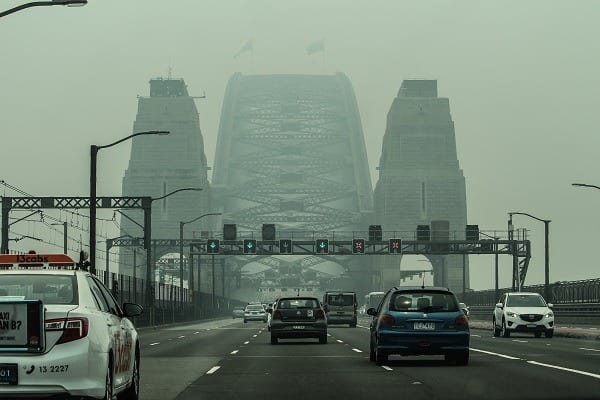Holding press conference after press conference he throws government change at bushfire-affected areas to clean up the mess of his inaction while clinging onto his coal mines. And yet, he seems to be skirting around one very important issue: the bushfire smoke.
It’s pretty difficult to ignore. Our cities are blanketed in it. Most of the population is inhaling this hazardous smoke. The particles are inhaled before being trapped in our lungs. They are small enough to get into our blood stream. They can even settle in our minds.
This week Melbourne was ranked as having the worst air pollution in the world. I have heard a few people making comments about how countries like India and China have this kind of smoke all year long, so it’s about time Australia experienced some of the air quality it contributes to producing. But is it the same kind of smoke?
World number two tennis player Novak Djokovic this week called for a delay in this year’s opening grand slam. “I know in China the playing conditions are very tough in terms of quality of air, but this is something different — I have never had this kind of experience before,” he said.
Slovenian tennis player, Dalila Jakupovic was one set up when she collapsed in a coughing fit. Later on, she spoke to the media where she too announced she had “never experienced anything like this”.
The truth is, that the industrial pollution in China and bushfire smoke are made up of different components. Sifting through the expert opinions presented in the media on the long-term health implications of bushfire smoke is confusing to say the least.
This week, The Age published two articles on the same day with very different points of view. In one story, Associate Professor Fay Johnston from the environmental health group at the Menzies Institute for Medical Research was interviewed where she said that the EPA-recommended P2 masks can be “close to useless” because it is very difficult to get no gaps between the mask and the face. Health Minister Brad Hazzard was interviewed in another article saying that when worn correctly P2 masks “can reduce dramatically particles entering the lungs”. However he did use the word “can” and the phrase “worn correctly”.
What is evident, is that more research is needed into bushfire smoke, which is why it was a step in the direction when Scott Morrison announced five million dollars of funding into research of implications this week. There is also a study in the USA currently underway in response to the California fires.
But what happens in the meantime?
As citizens of the Australian public, are we just supposed to get on with our lives amidst the smoke with a huge question mark over our heads? There is also concern over our water, and what these small bushfire particles, not visible to the naked eye, can do to it.
In mid-2019, researchers from Yale and Harvard stated that the West will see more waves of bushfires and that they will last longer. In 2019 it was estimated that chronic smoke exposure caused about 20,000 premature deaths in the USA.
This isn’t about being alarmist, but more about being realistic and practical. Considering there could be long term health implications is surely an issue facing our country “right now”? Yet, support from the government on this seems lacking.
On the EPA Victoria website, it is recommended you stay indoors when the air quality isn’t good, with the doors and windows closed. But Australian homes are not as air-tight as the homes you would expect to find in the UK, for example.
There is air leakage, which is why on really bad days, I can smell the smoke in my home. I am inhaling bushfire particles in my home yet there is no information about this on the EPA website. Especially since it is probably in my best interests to have an air purifier.
But good luck trying to find one. They are nearly impossible to access in Australia, with many stores sold out. If you do happen to find one, they are not cheap. Similarly, the EPA recommends P2 or N95 masks you can buy from “most hardware stores”. I went from store to store and couldn’t find one, so I ordered online from a construction equipment site. But they can only be used for one day.
Is this good enough? What will happen when our children go back to school? Scott Morrison was quick to generate an advertisement highlighting the clean up support he is providing to fire-affected communities, yet he can’t get an ad out about how to best protect ourselves from the smoke?
Is it that hard for the government to pull some experts in a room to come up with the best recommendations for the population? The government should provide us all with masks and a subsidy for an air purifier. But it’s not just about the money, it’s actually getting these products into the hands of Australians when there’s a national shortage.
All we are hearing is excuses. Morrison continues to handball the crisis to state governments, which have their hands full fighting fires and supporting communities.
Ultimately, the government’s inaction on this stems from climate change denial. They don’t want to admit that it is their inaction that has led to this mess. It’s time they admitted to their faults and pulled up their socks. Our health is relying on it.


